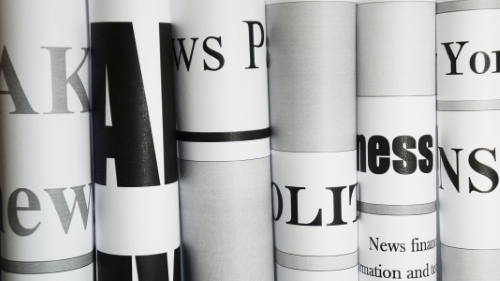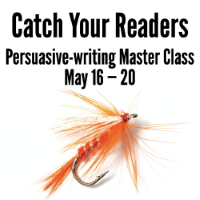3 ways to polish your traditional heads
Here’s a quick tip for making more of your news headlines: Make sure you’re telling the story and not just telling about the story.

Instead of telling about the story:
Moves and milestones
Tell the story:
Phil Smith named product manager, Program Development
Instead of telling about the story:
Benefits changes announced
Tell the story:
Hallmark doubles profit-sharing contribution
Instead of telling about the story:
New survey tracks industry trends
Tell the story:
More communicators measuring ROI, survey says
To write a catchy headline, communicate the important parts of the story.
Want to write great headlines that attract attention and get your target audience to read the article or blog post? Here are three more steps for writing news headlines:
1. Make a single point.
Here’s a quick test to run on your headline: Count its commas, semicolons, dashes and other punctuation. That punctuation can be a clue that you’re trying to cover too many ideas in your headline.
Tempted to write headlines like these?
Copper Wire Theft Rising in XYZ Service Territory; Thefts Pose a Safety, Reliability Threat
XYZ Company Plans Expansion of its Texas Eastern System; Shippers Sign Long-Term Transportation Contracts to Serve Northeast Markets
New California law bans home disposal of cell phones and common batteries; residents can drop off cell phones and dead batteries at XYZ Company stores
Move everything after the semicolon into the deck, aka the one-sentence summary under the headline.
2. Make it factual and free of hype.
On my desk is a New Yorker cartoon where a CEO is talking to his PR executive. “Here it is, the plain, unvarnished truth,” the CEO says. “Varnish it.”
Skip the varnish. Cut phrases that sound anything like these:
Expands leadership
Sets major milestone
In a move that sets the next industry milestone and reinforces its leadership position …
Your news headline should sound journalistic, not like marketing hype.
3. Use dynamic verbs.
A story is a verb, not a noun, as one of the former editors of The New York Times says. That means the verb is the story. So forget lame verbs like launches, introduces and announces.
And for gosh sakes, don’t leave the verb out altogether. Label headlines are the No. 1 problem I see when reviewing corporate headlines to customize my in-house writing workshops.
Subject, verb, object is the best sentence structure for good headlines. And use present tense, active voice.
Do your news heads draw readers in?
How can you reach non-readers with words?
“Readers” don’t read. Even highly educated web visitors read fewer than 20% of the words on a page.
 So how do you reach “readers” who won’t read your paragraphs?
So how do you reach “readers” who won’t read your paragraphs?
Learn how to reach people who spend only two minutes — or even just 10 seconds — with your message at Catch Your Readers, our persuasive-writing workshop, starting May 16.
There, you’ll learn how to put your key messages where your readers’ eyes are. You’ll discover how deliver your key ideas to people who don’t read the paragraphs. And you’ll find out how to draw even reluctant audience members into your message.
Save up to $100 with our group discounts.
